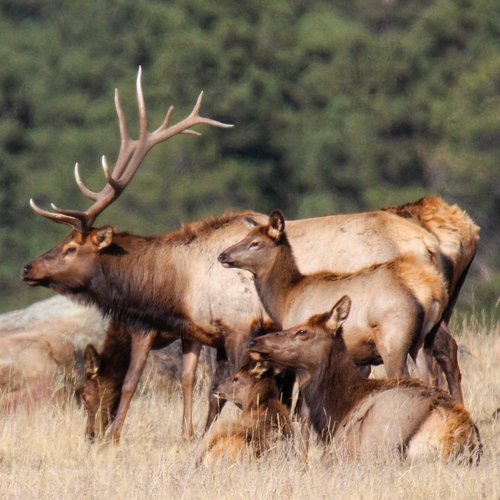
Elk
Majestic and sociable, the North American elk (Cervus canadensis) roams forested regions, captivating observers with its massive antlers and bugling calls. A keystone species, elk play a vital role in maintaining ecological balance by grazing, promoting plant diversity.
10-13 years
Lifespan
171.0 - 600.0 kg
Weight
Length: 1.6 - 2.7 m; Height: 75 - 150 cm
Size
Brown
Color
16 months
Age of Sexual Maturity
2 months
Age of Weaning
40 mph
Top Speed
Least Concern
Conservation Status
Increasing
Population Trend
Distribution Range of the Elk
Cervus canadensis, commonly known as the elk or wapiti, is native to North America and eastern Asia. In North America, it is predominantly found in the United States and Canada. In Asia, it is native to countries such as Mongolia and regions in Russia. The species is also found in the Greater Yellowstone Ecosystem, the Rocky Mountains, and parts of northeastern China.
Elk's Habitat
Environmental Conditions
Elk typically inhabit temperate forests, grasslands, and mountainous regions. They are adaptable to a range of climates but are most commonly associated with cool temperate conditions. The habitat includes open meadows, forest edges, and alpine environments. Seasonal migrations are common where elk may move to lower elevations or more sheltered areas during winter.
Ecological Niche
Elk are herbivores and play a crucial role in their ecosystems as grazers. They feed on grasses, leaves, and bark, influencing vegetation structure and composition in their habitats. In turn, they serve as prey for large carnivores, such as wolves and bears. The availability of open spaces and diverse plant life is essential for their survival.
Copyright @ Nature Style Limited. All Rights Reserved.
 English
English